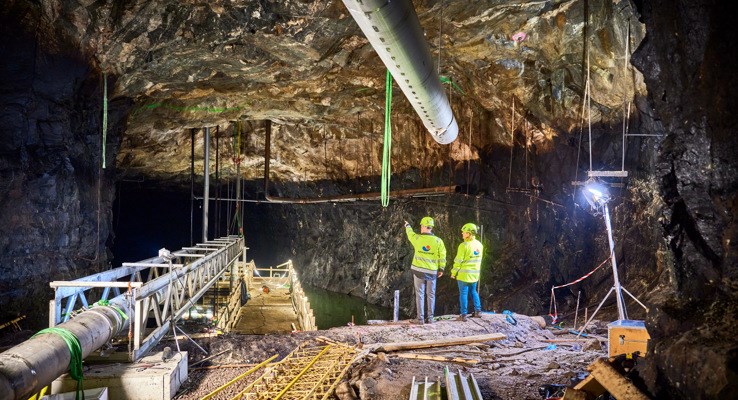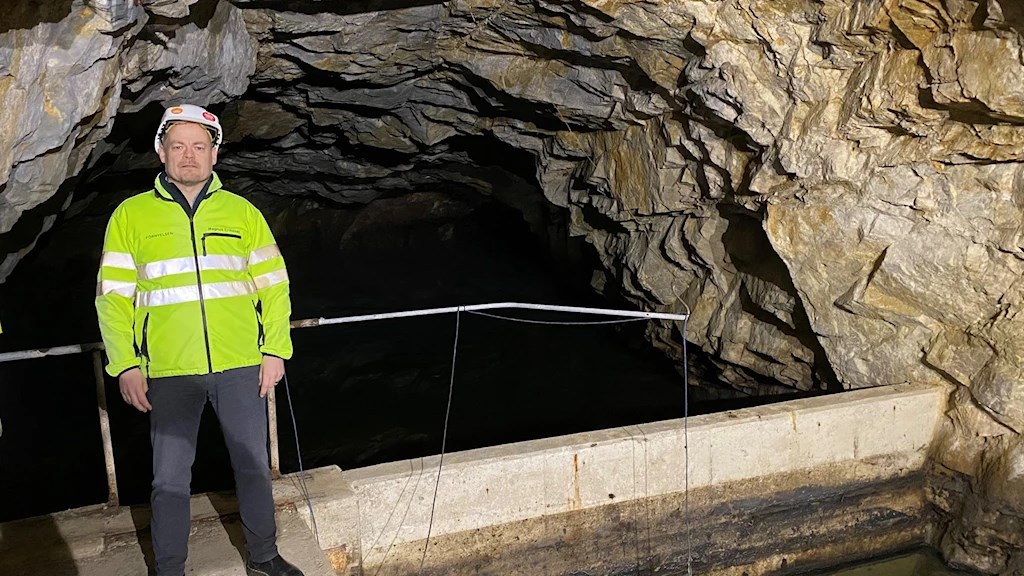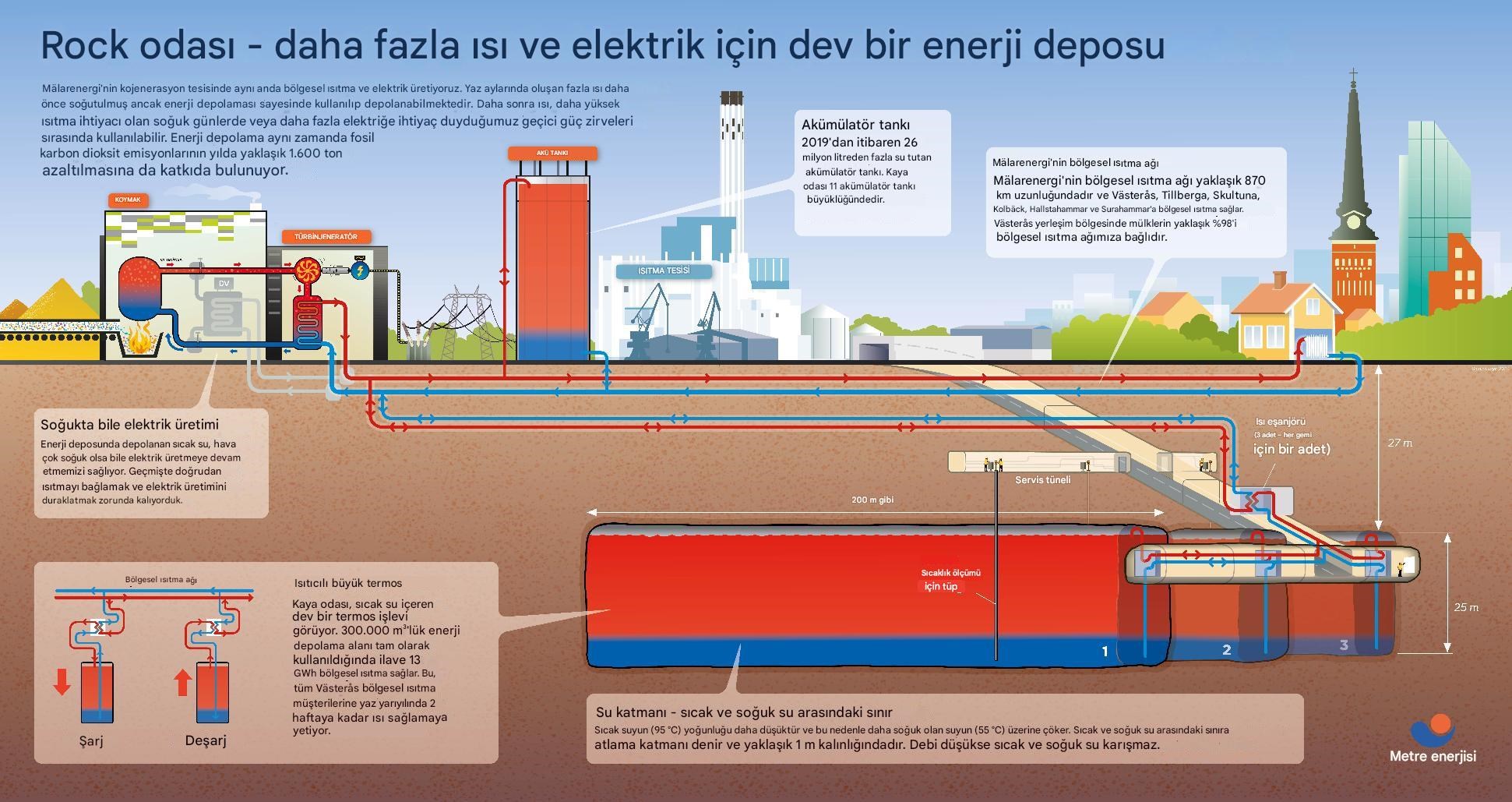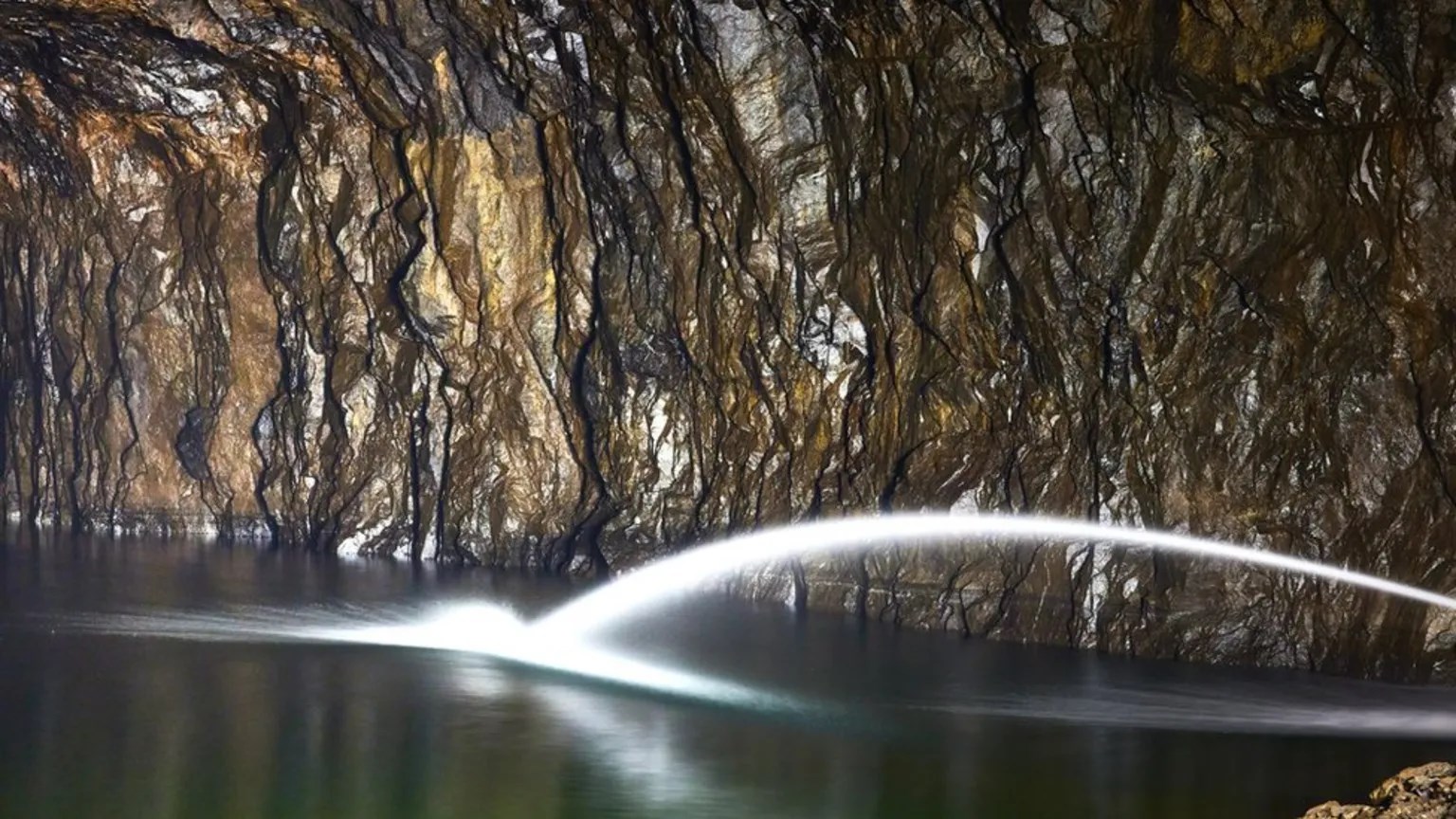See Full Size
98% of the buildings in Västerås, Sweden, with a population of 160 thousand, are connected to the central heating system. This central heating system is CHP (which was installed in the 1960s).Combined Heat and Power) comes from the power plant. This CHP power plant produces both electricity and heat. In this way, it provides 90% energy efficiency from fuel instead of power plants that produce 40% electricity from fuel.
In Sweden, underground caves were prepared to store oil due to reasons such as the oil crisis and fear of war. Of course, over time, coal was used instead of this fuel. Nowadays, all coal boilers have been disabled, with one of them standing in reserve.
The electricity and heating power plant switched to biofuel and then to pellet burning garbage in the 2000s. Finally, it was powered by reclaimed wood particles. One fossil-based power plant was left ready to be ignited when the highest heat was required.
The power plant was converted into a hot water tank
The biggest problem with the central heating plant in summer is that people in the city do not need heating and only use hot water for showers. However, it is quite difficult to turn a large boiler on and off, so it always works. To provide short-term surges and long-term heat storage, the company heated the old oil tank at 95° C. to the hot water tank He decided to translate it.
A total area of 300 thousand cubic meters was reopened, cleaned, and pipes were placed to take hot water from the surface and cold water from the bottom (the water is hot at the top and cold at the bottom) and started to be used as a balancing tank. Thus, the power plant preserved the excess heat it produced in this storage and transferred the excess energy it produced in summer to winter. The system works so efficiently that every need is met even at times of -20 °C.
Fossil-based sudden demand is fueling the cauldron much less than before. The stored hot water heats the rock around it, but since the rock or soil is not a very good conductor, the heat loss gradually decreases once it heats the nearby mass around it.
The tank is so large that the amount of hot water there alone will be enough to heat the city for two weeks. The company uses the hot water battery in the project, which costs 15.5 million dollars in total, to charge or discharge it every day. Sometimes they store excess energy in the battery, and sometimes the excess demand is met by the battery.
Total 13 GWh capacity system, 700 MW The Mälarenergis company, which has boilers that provide heating with 10000 watts of power and manages an 870 km heating network without any problems during the cold winter months when temperatures reach -20 °C, is also making plans for an electric battery facility with a power of 100 MW. The company started filling this hot water tank in June and put it into operation in September 2024.
This news our mobile application Download using
You can read it whenever you want (even offline):






